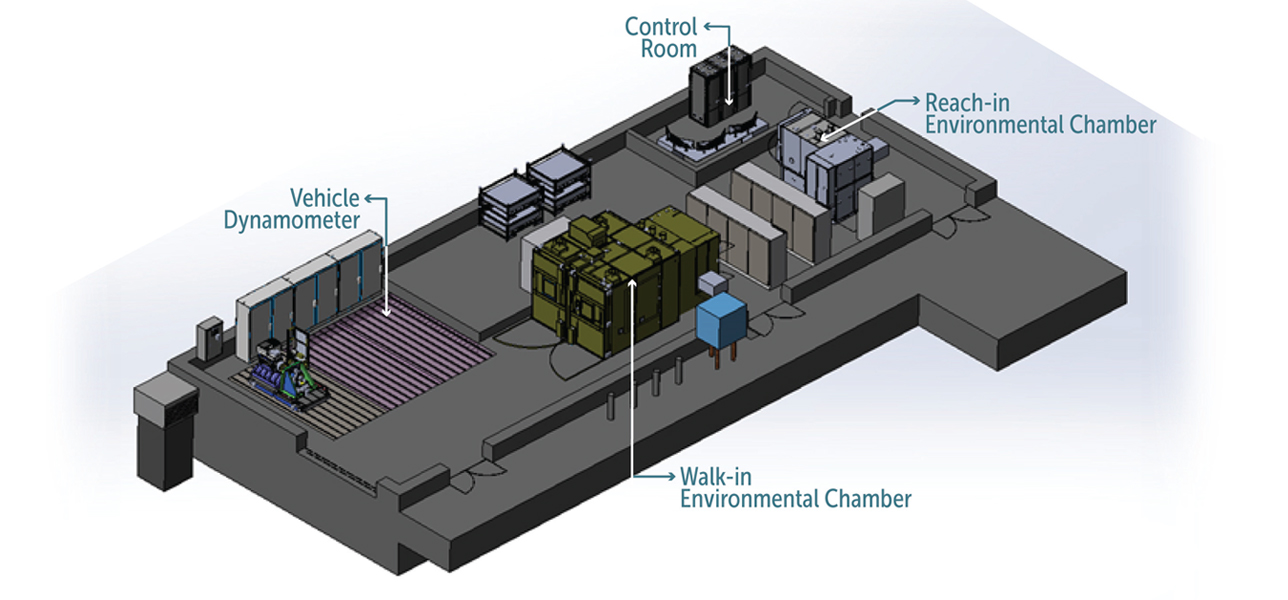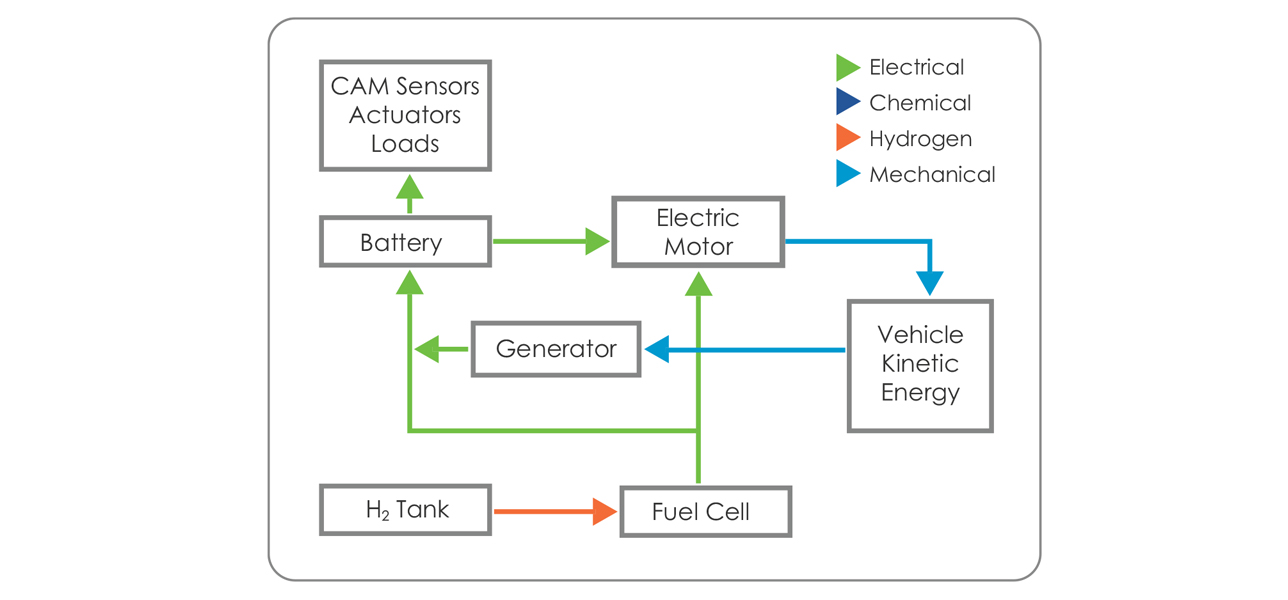Research Highlights
- 1: Zero-emission
- 2: Electric
- 3: Two-wheel dynamometer
- 4: Two environmental test chambers
- 5: In-situ evaluation
Vehicle Evolution Laboratory (VEL)
The Vehicle Evolution Laboratory addresses the performance of zero-emission electric vehicles and their drivetrain components, including electric motors, batteries, and hydrogen fuel cell stacks. This lab hosts a two-wheel dynamometer and test equipment for battery testing – from cell level to full pack. Two environmental test chambers make in-situ evaluation of electrochemical power sources, hydrogen fuel cell, and battery stacks possible. These capabilities provide a wide range for the evaluation of the vehicle powertrain, test of different driving cycles and environmental conditions that reflect on the drivetrain's energy efficiency, durability, charging demands, etc.
Battery Testing
Lithium ion battery testing involves a series of procedures and tests to evaluate the performance, safety, and lifespan of the batteries. Lithium ion batteries are widely used in a variety of applications, including consumer electronics, electric vehicles, and stationary energy storage systems.
We do have specialized equipment and software for battery testing to simulate real-world conditions and measure various parameters such as capacity, voltage, temperature, and resistance. The tests may be performed on individual cells, modules, or complete battery packs.
The battery testing facility allows testing on cell level (up to 600 W, up to 6 V), module level (up to 30 kW, up to 60 V) or stack level (up to 500 kW, up to 1000 V). We do have multiple channels for testing different parameters simultaneously or by combining multiple channels increase the power limit for the tests.
All tests can be performed in environmental chambers (from 1 m3 up to 23 m3), where we can test at temperatures from -70 °C to +180 °C with full control of humidity (10 %RH to 98 %RH).
All test systems are completed with industrial standard chillers for active cooling of your test specimen.
We can offer:
- Battery Life Cycle Testing
- Battery Performance Testing
- Thermal Cycle Testing
- Failure Analysis
- Electrochemical Impedance Spectroscopy
- R&D Testing
- Cell Surveillance Testing
- Battery Life Cycle Testing
- Battery Thermal Cycle Testing
- Post-mortem analysis of battery cells (in combination with the analytical lab and other UCI facilities
Vehicle Testing
Testing with a real-world vehicle in a controlled laboratory, as opposed to simulation, provides benefits including realistic characterization of vehicle performance, and a robust investigation of vehicle technologies prior to road tests. For these benefits, we have a flexible and broadly capable HORIBA dynamometer system with SPARC and STARS software which enable custom data collection and real-time display dashboards along with testing automation as an integral resource in the HIMaC Vehicle Evolution Laboratory for zero emission vehicles.
Pre-set or custom drive cycles can be loaded for drivers to reference during dynamometer experiments. A data acquisition cart expands data collection with capacity for a variety of thermocouples plus analog and in- and outputs.
The future of mobility includes advanced vehicle and driving technologies (e.g., improved electric powertrain designs, adaptive cruise control, machine-to-machine communication, and other cooperative driving automation (CDA) features). Connection of the dynamometer to the HIMaC Connected and Autonomous Mobility Laboratory (CAML) enables vehicle-in-the-loop (ViL) simulation. The CAML brings powerful CDA simulation tools including a driver simulation platform with software such as HORIBA MIRA DigiCAV, AVSimulation SCANeR, and CARLA.
Key dynamometer specifications include:
- Two wheel dynamometer configuration
- Combined power: 448 kW
- Combined torque: 8000 Nm
- Complementary DC power supply
- Vehicle-in-the-loop (ViL) connection


